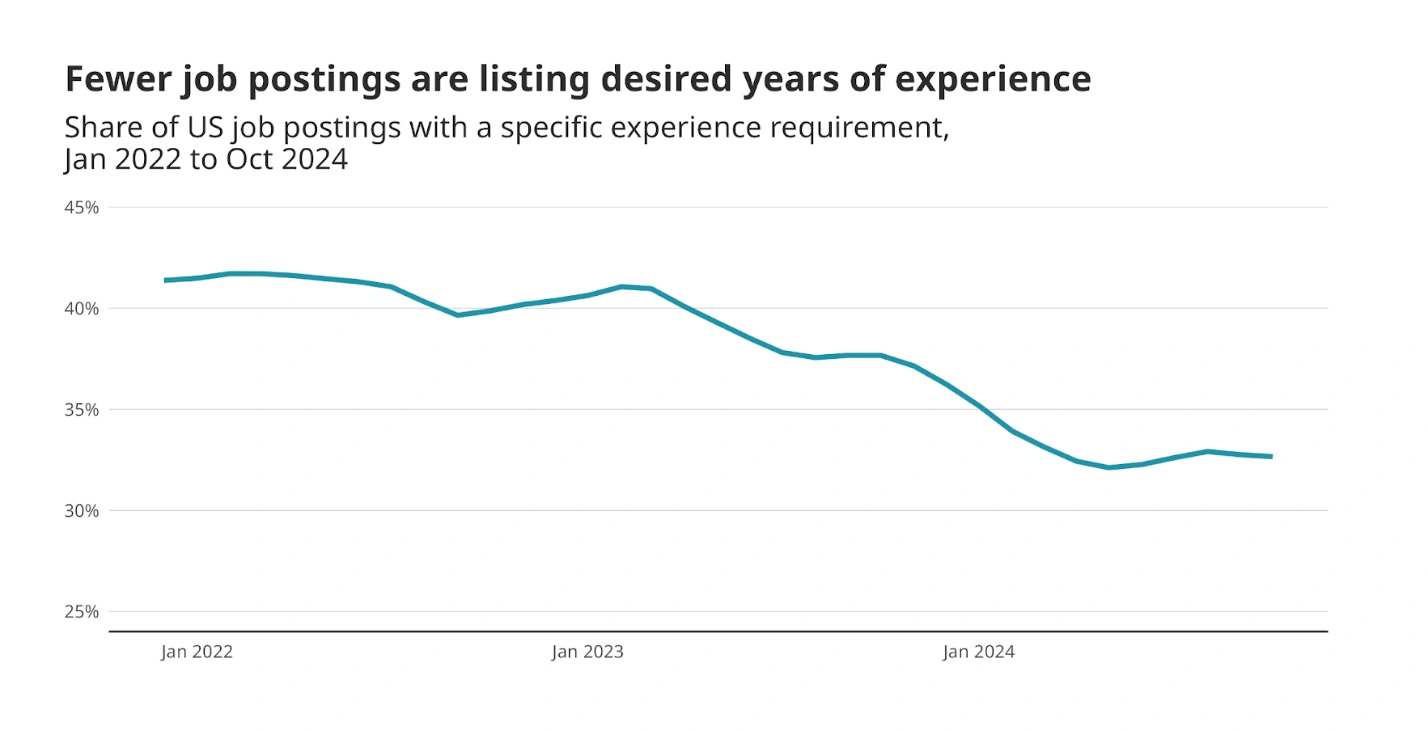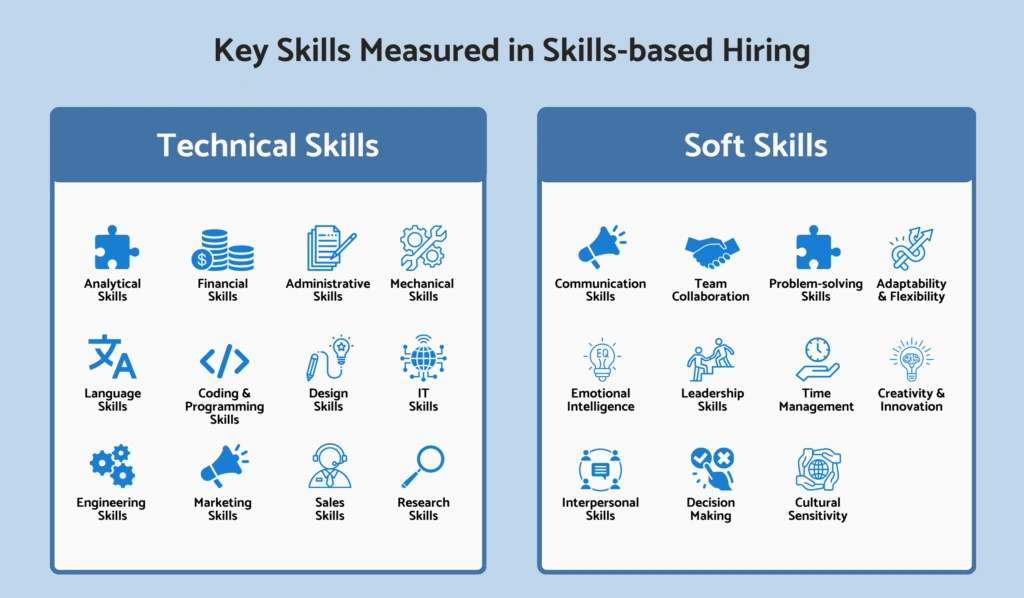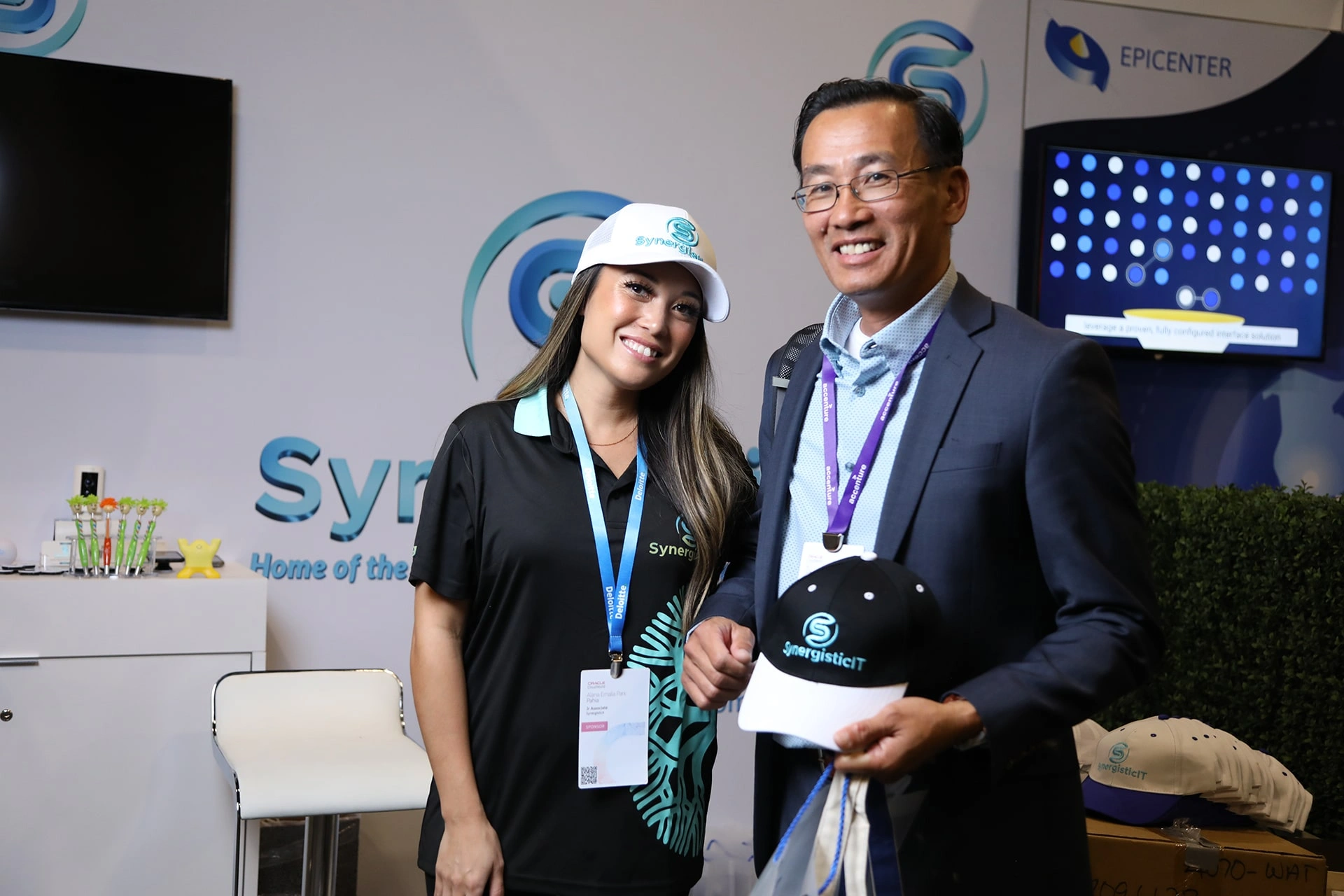
Introduction: Beyond Years—The Modern Tech Hiring Landscape
Over the past decade, the technology sector has evolved dramatically, not just in the tools and languages it employs but also in its approach to talent acquisition. Candidates searching for tech jobs are confronted with job postings ranging from “entry level—1 year of experience” to “principal engineer—must have 10+ years in the field.” This spectrum often confuses both recent graduates and experienced developers alike: Do more years on your resume matter most, or is mastery over the tech stack and hands-on project experience the real coin of the realm? Recent research, real-world hiring data, and high-profile examples from both startup unicorns and blue-chip companies suggest a paradigm shift. Increasingly, employers are scrutinizing what a candidate can do (skills and portfolio) rather than how long they have been employed. lets discuss Years of Experience vs. Tech Stack: What Tech Employers want?
This post explores how many years of experience tech clients typically ask for, what hiring data and industry analysis suggest about experience versus proficiency, why “years” can be overrated, and how focused upskilling—such as via SynergisticIT’s job placement programs—can vault ambitious techies into jobs regardless of age or experience. We will also look at how driven young achievers—with just months or a few years of immersion—have become industry disruptors, and how actionable resources, like SynergisticIT’s tutorial blogs, interview prep content, event videos, and hands-on Java and Data Science tracks, enable jobseekers to outpace the competition.
Client Expectations: The Reality of “Years of Experience” in Tech Hiring
1 Year: The Myth of the “Entry-Level” Barrier
Contrary to expectations from college seniors and coding bootcamp graduates, true entry-level tech roles—those open to applicants with less than one year of professional experience—are now scarce. Many jobs labeled as “entry-level” subtly require 1–2 years of hands-on experience, which often perplexes first-time jobseekers. Yet, a growing chorus of industry observers notes that high-potential candidates can indeed bypass even this barrier if they demonstrate robust hands-on skills, a project-rich portfolio, and up-to-date knowledge of the current tech stack.
Recent trends indicate post-pandemic tech recruiting is shifting to skills-based assessments for those with limited job history. Companies increasingly focus on applicants’ abilities, as evidenced by the shift in recruiting practices analyzed by Datapeople and SHRM. According to these analyses, project experience, internships, open-source contributions, and coding certifications can, in some cases, offset the “1-year” requirement, especially when applicants can prove they’ve applied skills in realistic contexts.
Still, 1-year+ requirements act as a common filter for high-demand jobs, especially in mainstream companies where risk aversion prevails in hiring. Organizations with mature development teams or those operating in regulated sectors may prioritize minimal professional history to filter out applicants who lack exposure to coding sprints, version control workflows, or collaborative development. Nevertheless, innovative firms—especially startups—tend to be more receptive to those who can “show, not tell,” regardless of calendar time on the job.
3 Years: The Sweet Spot for Fast-Trackers and Mid-Juniors
The “3 years of experience” threshold is often seen as a magical number, serving as a dividing line between newcomers and established contributors. In job postings for roles such as “Software Developer II,” “Junior Data Scientist,” or “Java Developer,” the 2–3 year mark is pervasively used as a baseline for candidates expected to work with minimal supervision while still being coachable.
Research by SkyWater Search and Dice suggests this expectation is as much about risk mitigation as it is about pure skills: Candidates with 2–3 years are assumed to have committed at least one full product lifecycle, navigated internal code reviews, and acquired some proficiency with versioning and debugging best practices. However, the 2025 Dice Tech Trends report points out that tech hiring leaders increasingly accept candidates with less experience who have completed serious, portfolio-building projects—especially those who have excelled in intensive upskilling bootcamps, earned technical certifications, or contributed to significant open-source efforts.
Employers value a demonstrable “ability to learn fast and ship code”. For candidates on the SynergisticIT job placement track, the immersive nature of the program enables them to “front-load” what would typically be acquired in several years of workplace experience into a concentrated, project-based academic setting. This is vital for competing for opportunities advertised for “3+ years” of experience.
6 Years: Entering the Senior Candidate Arena
With 6 years or more of experience, candidates begin to enter seniority territory. Roles at this level often involve technical leadership, code review authority, architectural planning, and sometimes direct mentorship of junior team members. However, industry insiders are quick to point out that not all “6 years” are created equal. Time alone does not equate to mastery, especially if that time was not spent confronting new challenges or expanding into modern toolchains.
According to GeeksforGeeks, Indeed, and Zero To Mastery’s in-depth guides, the transition from mid-level developer to “senior” is strongly correlated with depth and variety of technical exposure, not merely years. Job postings from leading tech employers stress proficiency in current frameworks, the ability to architect and optimize complex systems, and (frequently) proven leadership contributions to open-source or major projects.
Crucially, several companies have reduced their years-of-experience requirements in favor of concrete achievement and up-to-date technical mastery, as noted by Harvard Business Review and Boston Consulting Group’s studies on skills-based hiring. As cloud infrastructures, JavaScript frameworks, and data pipelines evolve, so do employer standards: A developer with only three years but a current portfolio of advanced projects may outshine a six-year veteran whose skills are out-of-date.
10 Years: Technical Leaders, Architects, and Principal Engineers
At the “10 years of experience” mark, most job postings signal a search for technical leaders—principal engineers, architects, team leads, and specialists. Expectations often extend into architecture design, leading full project life cycles, implementing best practices, and cross-functional collaboration.
However, in managerial and technical forums alike, a truth emerges: Very few engineers remain hands-on with the latest stack over a 10-year period without a deliberate focus on continuous upskilling. For this reason, many top-tier firms now highlight ability, recent achievement, and technical relevance over merely counting years. Indeed, some of Silicon Valley’s brightest leaders (and now, corporate tech VPs) reached such heights well before the 10-year benchmark, due purely to deep technical expertise and the ability to deliver impact quickly.
The shift away from “years = seniority” is echoed in principal engineer job descriptions, which increasingly itemize complex skills, up-to-date certifications, and evidence of thought leadership in relevant domains over static experience thresholds.
Research Insights: Experience vs. Technical Skills, 2024–2025
Skills-Based Hiring: A Resounding Industry Trend
Across the world’s major tech employers, 2024 and 2025 have seen a decisive turn toward skills-based hiring. Studies by Harvard Business Review, BCG, Forbes, and USA Today confirm that “what you know and can do” now trumps “how long you’ve been doing it” in most tech roles. In a Forbes analysis, 90% of companies report better hiring outcomes when prioritizing skills assessments and technical projects over education or years of experience. Similarly, Boston Consulting Group’s 2023 publication describes an industry-wide “unbundling” of credentials, with candidates progressing quickly if they can prove recent, relevant mastery.
This evolution is particularly evident in Java and Data Science staffing. Employers are searching for candidates who can showcase the exact languages, frameworks, and tools their projects run on, evidenced by portfolios, code samples, and open-source activity. Fully half of hiring managers in Pomeroy’s 2025 Tech Trends survey stated they would “gladly hire an advanced bootcamp graduate or upskilled junior developer for positions previously limited to those with 3+ or even 5+ years of experience” if the candidate’s technical test or portfolio aligned with stack needs.
Key Takeaway: Employers will sometimes accept less experience if a candidate’s actual skills and accomplishments tightly match a job’s technical demands. This is a boon for ambitious young engineers and for jobseekers emerging from immersive programs such as SynergisticIT’s Java and Data Science tracks.
The Diminishing Weight of Year-Counting
Historically, “years of experience” was used as a proxy for skill, maturity, and exposure. However, this assumption is increasingly flawed given the pace of tech change and the proliferation of fast, effective upskilling options. Indeed, compelling survey data shows that many seasoned engineers plateau without effortful upskilling, while newer developers who learn and code aggressively gain skills at dramatically accelerated paces.
A 2024 FlexSurveys analysis promptingly asks, “Would you rather hire someone with 10 years of outdated Java experience or a 2-year developer who’s deployed with Spring Boot, cloud, and REST every day?” Their research found that hiring managers often choose the latter when stakes are high and project fit is critical. Notably, tech companies—especially those operating on the bleeding edge—will go so far as to waive years requirements outright for candidates with rare or hard-to-find expertise.
In summary, years-of-experience as a primary filter is waning throughout the industry, even in large enterprises. “Prove what you know—demonstrate you can build, deploy, optimize, and debug in the modern stack” is the new mantra.
The Importance of Java, Data Science, and Current Tech Stacks
The Case of Java: Stack Mastery Over Time Logged
Java remains one of the most in-demand and critical back-end languages for global enterprise applications. Job descriptions for Java developers at all levels routinely list core stack expectations: Proficiency with Spring/Spring Boot, Hibernate, RESTful APIs, databases, and now often cloud platforms like AWS/Azure.
According to FRG Consulting’s research, for specialized Java roles, mastery in the core frameworks and ability to debug, refactor, and optimize real applications frequently matters more than generic years of experience. The most successful candidates (and fastest-promoted engineers) continue to learn new libraries, security models, and deployment best practices regardless of whether they started coding two years ago or a decade prior. As an example, companies hiring Java engineers for product launches tend to screen candidates via live coding, system design rounds, and technical take-home assessments, heavily prioritizing candidates who can “think in code” and explain architectural decisions over those who have merely occupied the title.
SynergisticIT’s Java Job Placement Track is designed with this market reality in mind, supporting learners not just in nailing the Java basics but in mounting real, production-level projects using the most current frameworks. The curriculum centers on getting “interview ready” and “job ready,” fostering the agility and capability that clients want.
Data Science: The Primacy of Modern Skills
For Data Science and Machine Learning roles, the bar for required experience also fluctuates, but not as much as the need for hands-on, demonstrable competence. Employers typically seek Python or R proficiency, experience with libraries (Pandas, Scikit-learn, TensorFlow), data visualization skills, SQL, and increasingly, exposure to cloud-based ML tools. A candidate who has built meaningful projects—such as classification pipelines, time-series predictors, recommendation engines, or production model deployments—stands out more than those who list “6 years of analysis” but lack project depth.
Analytics Insight’s 2024 employer survey highlights the reality that demonstrable Data Science solutions, Kaggle competitions, and capstone projects impress hiring managers far more than years of spreadsheet or dashboard experience. Even for principal-level roles, “depth and breadth” in toolkits, algorithms, and project ownership trump paper experience.
SynergisticIT’s Data Science Track enables candidates to actively build and showcase substantial projects, participate in technical interview simulations, and acquire certifications that map directly onto employer needs. The result: graduates can vault into roles often advertised for someone with more traditional on-the-job years, but lacking the latest skills.
Young Tech Achievers: Case Studies Defying the “Years” Rule
Famous Young Achievers in Tech
Some of the most celebrated modern programmers and tech founders were industry disruptors before their 25th birthday, often propelled by deep curiosity and mastery of the latest stacks instead of long resumes. Here are notable examples:
| Name | Age at Achievement | Notable Accomplishment | Technical Focus/Stack |
| Mark Zuckerberg | 19 | Launched Facebook from Harvard dorm | PHP, MySQL, JavaScript |
| Vitalik Buterin | 19 | Co-created Ethereum blockchain platform | C++, Python, Solidity |
| Avye Couloute | 15 | STEM advocate, robotics entrepreneur | Raspberry Pi, Python |
| Iddris Sandu | 22 | Created digital infrastructure for Uber, Snapchat | AI, Data Science |
| Samaira Mehta | 9 | Created CoderBunnyz, coding game for kids | Board game logic, Python |
| Ben Pasternak | 15 | Social app developer, exited to major media companies | iOS stack, Python, JS |
Sources: Kodecrush Young Coders Blog, World Future Awards, Business Insider Young Geniuses, InstinctHub Tech Prodigies
These examples are not outliers due to luck or connections alone. What unites these achievers is a relentless curiosity, consistent upskilling, and the ability to deliver using cutting-edge frameworks and tools—even as teenagers or early college students. In interviews, successful young technologists often cite deliberate practice—building real products, participating in hackathons, contributing to open source, and leveraging communities—as force multipliers that informally accelerate their experience well past what is visible on paper.
Moreover, these stories resonate in today’s hiring landscape: If you can deliver value with the latest stack, years are negotiable; business outcomes aren’t.
SynergisticIT’s Job Placement Model: Winning With Skills, Projects, and Tech Fit
What Is SynergisticIT? A Hands-On, Results-Focused Upskilling Pathway
SynergisticIT is a leading provider of immersive, career-relevant upskilling for the tech industry in the United States. Its core promise is to make job candidates “client ready” in Java and Data Science by focusing on hands-on practice and portfolio-building projects, not just theoretical knowledge. Their job placement program is specifically designed to bridge the “experience gap” for talented, ambitious learners who lack years but want to prove what they can do.
Major Program Features:
- Curriculum Aligned to Client Needs: Regularly updated to reflect the current hiring stack (Java, Python, REST, Spring Boot, Data Science libraries)
- Project-Based Learning: Each candidate completes multiple real-world coding and analytics projects, which are then featured in individual portfolios
- Interview Preparation: Access to technical interview question resources, mock interviews, and commonly asked coding interviews in Java, Data Science, and more
- Certifications & Skill Validation: Courses align with industry certifications that are valued by US-based tech clients
- Soft Skills and Communication: Emphasis on communicating technical concepts to managers and stakeholders—a critical “hidden” skill in hiring
- Direct Client Placement: Many graduates are placed directly into roles at major companies, with the ability to contribute from “day one” due to their preparation
Read more: SynergisticIT Job Placement Program Overview
Multiple independent reviews on Glassdoor and BootcampRating confirm that graduates regularly land jobs that advertised “2+ years” or “3+ years” of experience—even as fresh entrants into the workforce, thanks to their advanced skills portfolio.
Inside the Java Job Placement Track
The Java Job Placement Track at SynergisticIT stands out for its intensity and real-world focus. Students work through a curriculum that simulates actual project lifecycles used by client employers:
- Comprehensive Coverage: Core Java, OOP, Data Structures & Algorithms, Spring & Spring Boot, Hibernate, REST APIs, microservices, DevOps basics, and more
- Real Projects: Portfolio includes RESTful web services, data-driven enterprise apps, cloud deployment tasks, security implementations
- Technical Interview Drills: Java-specific interview prep, mock coding rounds, whiteboard exercises
- Job-Ready Skills: Emphasis on test-driven development, Git workflows, CI/CD pipeline basics, as expected in top workplaces
The end result is graduates who can immediately step into client projects with confidence, even when competing against peers with “more years” but fewer up-to-date skills. Client feedback highlights the benefit: “Your candidates can actually deploy apps, fix bugs, and understand our stack from Day 1.”
Data Science Job Placement Track: Modern Analytics at Your Fingertips
SynergisticIT Data Science Track equips learners with the critical thinking, coding, and project-building required in modern analytics roles. Graduates gain experience with:
- Toolkits: Python, Pandas, NumPy, Matplotlib, Seaborn, Scikit-learn, TensorFlow, Keras
- End-to-End ML Projects: Data wrangling, model selection, feature engineering, training, evaluation, and deployment
- Capstone Projects: Hands-on completion of real-world problems (e.g., fraud detection, image classification)
- Soft Skills: Storytelling with data, effective visualization, and presentation for non-technical stakeholders
Independent coverage confirms employer demand for this approach. NewsFile’s coverage of the SynergisticIT Data Science track launch highlights employer testimonials regarding graduates’ readiness to contribute to live analytics, machine learning, and data engineering operations. The program enables even those with little prior “on-the-job” exposure to outperform on practical coding tests and technical interviews.
From Learning to Landing the Job: The SynergisticIT Method in Action
How does SynergisticIT’s approach translate to job offers?
SynergisticIT’s secret lies in “learning by doing”—not by collecting years of tenure, but by building, deploying, and defending real projects before ever interviewing for a client. Its event series (Synergisticit Tech Industry Interaction Videos at OCW, Oracle Java One, Gartner Summit and other Videos and SynergisticIT’s interview tips blogs) provides both hard and soft skill boosters. Learners are required to articulate their technical journeys, defend their project decisions, and troubleshoot real bugs—core skills every hiring manager seeks.
Furthermore, SynergisticIT’s Synergisticit’s Career, Job Hunting and Hiring tips for Jobseekers and Employers deliver up-to-the-minute job search strategies, technical resume advice, and behavioral interview support. These resources are critical for anyone seeking guidance in navigating the modern skills-based hiring minefield.
Employer Insights: Do Tech Clients Still Care About “Years”?
Recent Research and Market Trends
A close examination of real job descriptions, recruiter commentary, and employer surveys from 2023–2025 reveals a persistent, but diminishing, reliance on “years of experience” terminology. This appears to be a holdover from HR tradition, but within hiring teams, technical assessments and project-based evidence are replacing printed numbers as the real metric.
2025 Pomeroy Tech Hiring Report Key Findings
- Skills/Stack Alignment Now Trumps Tenure: 50% of tech hiring managers prioritized project portfolios and recent certifications over years of formal work experience in 2025 postings.
- Stack-of-the-Moment Is Critical: Employers regularly update their filters to reflect current demand for technologies (Spring Boot, React.js, TensorFlow, etc.), sometimes accepting candidates with fewer years if they show up-to-the-moment proficiency.
Dice and Indeed: The Pivot to Skills Validation
- Dice recommends that recruiters “de-risk” by setting realistic expectations—not all 10-year candidates will outperform a driven junior with up-to-date skills and recent project wins.
- Indeed further asserts: “For principal and senior roles, hands-on project depth, technical communication, and stack fit matter as much—or more—than the raw number of years.”.
Harvard Business Review, USA Today, and Forbes Validate the Shift
Reports from HBR, USA Today, and Forbes highlight three converging factors:
- AI and Automation: Clients want candidates who can work with AI-powered tools (e.g., Copilot, ML APIs) regardless of tenure—depth of knowledge is more important.
- The Drop in Degree and Years Requirements: Many top tech firms (including Amazon, IBM, Google, and Salesforce) publicized skills-first hiring from 2023 onward, explicitly welcoming “junior” candidates who can demonstrate ability via portfolios or technical projects.
- Faster Impact Demanded: Hiring is driven by urgency; companies want contributors who can get up-to-speed fast—meaning those who have coded, debugged, and deployed recently.
Bottom line: The job market rewards currency, fluency, and delivery—not years for their own sake.
Interview Question Pages, Events, and Blogs: Getting “Job Ready” With SynergisticIT
Interview Preparation: Your Secret Weapon
Tech interviewing is formidable—even more so when candidates worry they have “too few years” on their resume. The pressure to solve live algorithms, diagnose code, or talk through system design on the fly is universal. SynergisticIT provides comprehensive interview resource pages for jobseekers, covering frequently-asked technical and behavioral questions:
These tools—combined with mock interviews and live drills—arm candidates to turn modest professional “years” into an asset. By practicing what employers actually test for, even first-time jobseekers can outperform “more experienced” but less-prepared competitors.
External resources, such as GeeksforGeeks Technical Interview Questions corroborate the view that practical skill testing and project talk-throughs now dominate interview formats across the sector.
Events Videos: Real Insight, Real Results
Practical learning does not stop at the end of a curriculum. SynergisticIT supplements its content with event videos and webinars featuring alumni success stories, recruiter Q&As, and live interview walkthroughs. This sustained exposure bridges the confidence gap, as jobseekers see real-world hiring in action and can model their approach accordingly.
Blogs and Ongoing Learning: Staying Ahead of the Curve
A key advantage of modern upskilling programs is their ability to update content based on current hiring trends. The SynergisticIT blog regularly analyzes changes in employer demand, rising frameworks, and the “hidden curriculum” of tech job search. Recent posts echo the core argument of this blog: Deep mastery of the right stack—demonstrated through code—will beat a thin resume padded only with years.
Conclusion: What Matters Most—Stack Mastery, Skills, and Attitude
Experience, measured in years, will always have some role in hiring—especially for leadership or regulatory positions. But the overriding evidence, both from market research and individual achievements, is clear:
- Tech stack fluency and the ability to deliver results now count more than years on your resume
- Ambitious learners who build projects, earn up-to-date certifications, and practice interview skills can leapfrog more “experienced” but less current peers
- Job Placement programs like SynergisticIT’s offer jobseekers a direct pathway to hands-on mastery and real employer demand
- Resources—interview questions, blogs, event videos—provide the tactical edge for new and career-changing technologists
Perhaps most importantly, young achievers (from Zuckerberg to today’s teen prodigies) prove that knowledge, curiosity, and “work you can demo” can trump the slow ladder of traditional professional experience.
If you want to break into—or accelerate within—the world’s most dynamic industry, learn deeply, build and showcase what you learn, and position your tech stack mastery as your calling card. In 2025 and beyond, your impact will speak louder than your years.
Ready to accelerate your journey? Explore SynergisticIT’s Job Placement Program, Java JOPP, Data Science JOPP, or check out their interview resources. The fastest path to a technology career is not always the longest—it’s the smartest.










